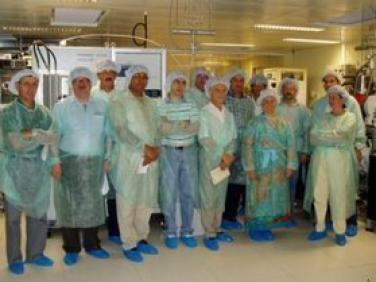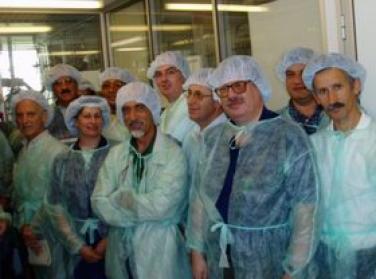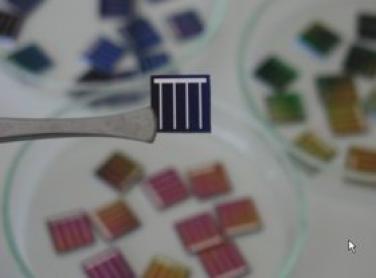
Between the 11th and the 16th of July (2003), the 1st Training Program in Microelectronic Technologies entitled “Microelectronics and Electronic Materials in High School” was held in the Department of Material Science, under the PRODEP III directive. The training was supported by CENIMAT and CEMOP whose research centers/laboratories are related to the Department of Materials Science. Although most of the 17 participating teachers where from the 11 schools of the Lisbon area, some came from as far as Entroncamento and Óbidos.

From the opinions expressed by the participants, the training exceeded all the expectations because they had the opportunity to work with the techniques they thought were not available in Portugal. During the training, the participants had the chance to design, simulate, build, test and encapsulate a junction photodiode that can be used as a prototype in their classes. This may enhance the motivation of the high school students since it is a device built by their teachers and not bought in an electronic store.
During the 5 days training, some theoretical notions were presented and several practical sessions were included:
• device dimensioning calculations (Excel and QuattroPro);
• electrical behavior simulation with Electronics WorkBench (EWB);
• lithography mask design with AutoCAD;
• device processing in a clean room envolving lithography, oxidation, phosphorous diffusion, metallization and annealing;
• device characterization (IV curves)
• encapsulation.

Due to the enthusiasm, motivation and interest demonstrated by the participating high school teachers, the faculty of the Department of Materials Science will continue to work on these initiatives the next years, with new editions of the training already planned, such as:
• “Utilization of renewable energies – the manufacture of solar cells”;
• “Liquid Crystal Display Technology”;
• “Microelectronics applied to MOS device fabrication”;
• “Microelectronics and sensors manufacture technology”.